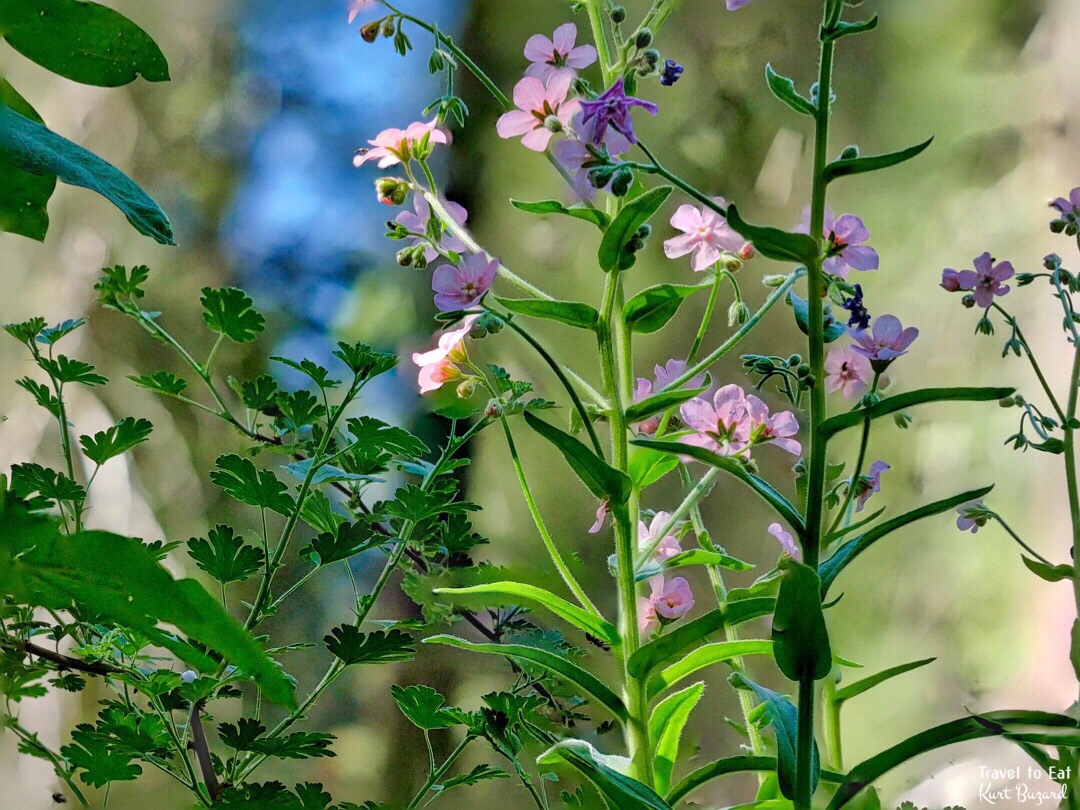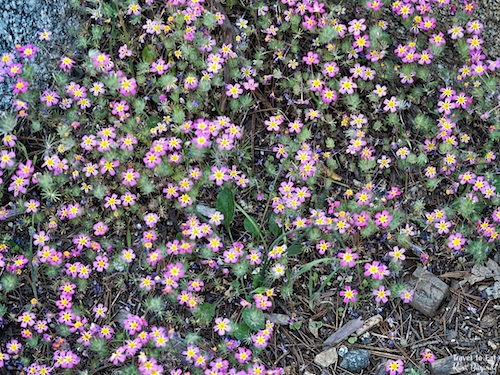
Even though it is summer for most of the nation, high in the Sierra Nevada mountains it is still cool and for all intents and purposes late spring, with temperatures in the 70s. Wildflowers are abundant and small streams and waterfalls are everywhere as runoff from the snowpack continues. Depending on the elevation, spring in Sequoia National Park generally lasts from April to mid-June. Early spring begins to bring warmer temperatures, but the sequoia groves are often still filled with snow. Fortunately, when we visited in June, the snow was gone and the wildflowers were in bloom with no snow.
Chaparral Yucca
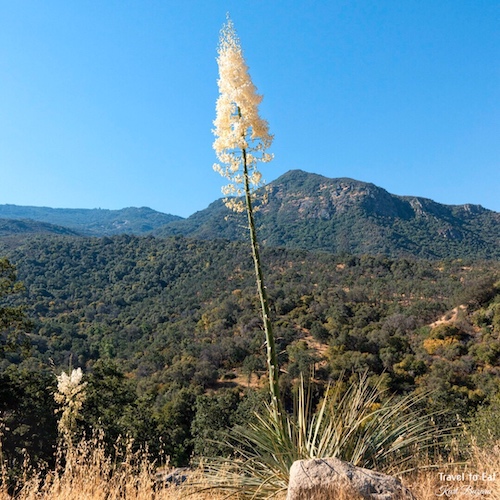
The taxonomy of Hesperoyucca whipplei is complex and controversial. Hesperoyucca was described as a genus by George Engelmann as long ago as 1892, but it has taken recent DNA analysis to confirm that they are genetically distinct from Yucca. It is native to southern California, United States and Baja California, Mexico, where it occurs mainly in chaparral, coastal sage scrub, and oak woodland plant communities at altitudes between sea level and 8202 feet (0–2500 m). It is pollinated by the California yucca moth (Tegeticula maculata), a relationship which has become a classic example of symbiosis. The moth collects pollen at night and pollinates nearby plants at night, inserting it’s egg in the process, thus insuring food for the larvae. I love the flower spire because it looks as though the top and bottom parts are just floating away.
California Buckeye
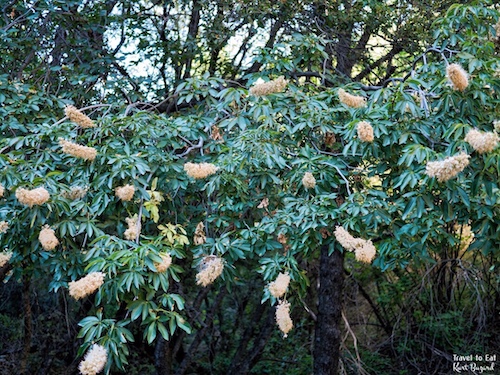
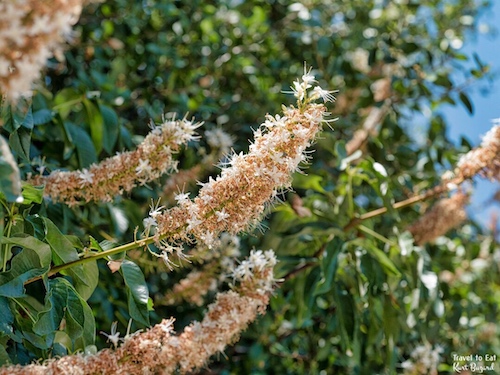
Aesculus californica, commonly known as the California buckeye or California horse-chestnut, is a species of buckeye native to California and southwestern Oregon. The flowers are sweet-scented, white to pale pink, borne on erect panicles 15–20 cm (6–8 in) long and 5–8 cm (2–3 in) broad. The fruit is a fig-shaped capsule 5–8 cm (2–3 in) long, containing a large (2–5 cm (0.8–2.0 in)), round, orange-brown seed; the seeds are poisonous. Local Native American tribes, including the Pomo, Yokut, and Luiseño, used the poisonous nuts to stupefy schools of fish in small streams to make them easier to catch.
Mountain Whitethorn
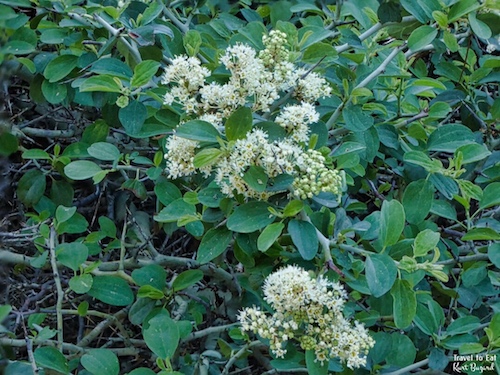
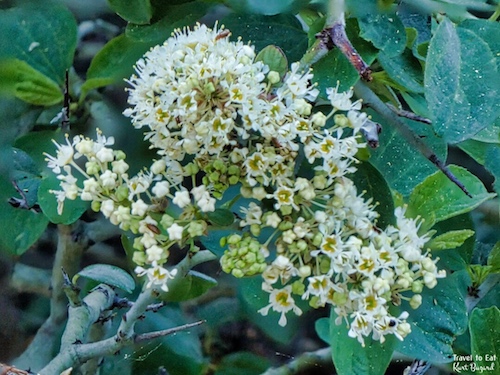
Ceanothus cordulatus is a species of shrub in the buckthorn family Rhamnaceae known by the common names mountain whitethorn and whitethorn ceanothus. It is native to California and adjacent sections of Oregon, Nevada, and Baja California, where it grows on mountain ridges and other forested areas.
Cow Parsnip
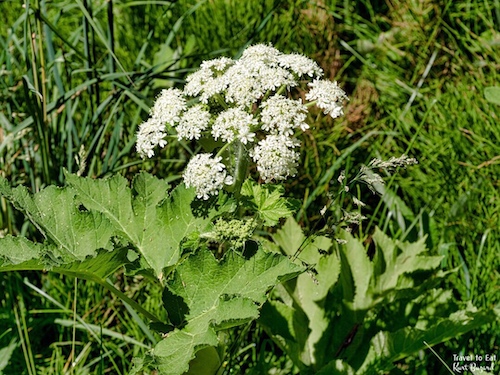
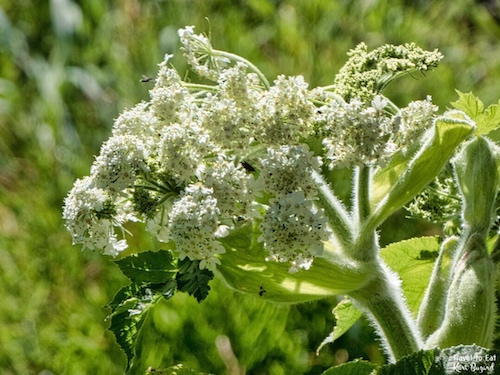
Heracleum maximum, cow parsnip (also known as Indian celery, Indian rhubarb or pushki) is the only member of the genus Heracleum native to North America. Cow parsnip is distributed throughout most of the continental United States except the Gulf Coast and a few neighboring states. Cow parsnip is a tall herb, reaching to heights of over 2 meters (7 ft). The genus name Heracleum (from Hercules) refers to the very large size of all parts of these plants. Indigenous North Americans have had a variety of uses for cow parsnip. It could be an ingredient in poultices applied to bruises or sores. The young stalks and leaf stems were used for food once the outer skin was peeled off. The dried stems were used as drinking straws for the old or infirm, or made into flutes for children. A yellow dye can be made from the roots, and an infusion placed on the body to repel flies and mosquitoes.
California Blackberry
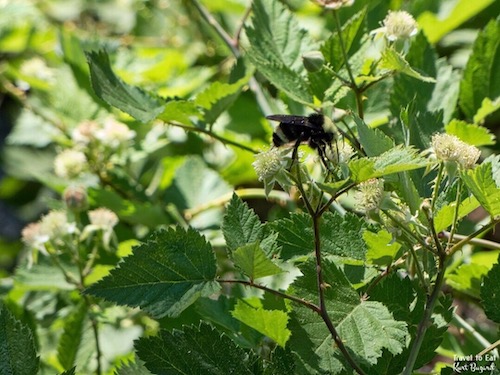
Rubus is a large and diverse genus of flowering plants in the rose family, Rosaceae, subfamily Rosoideae, with 250–700 species. Raspberries, blackberries, and dewberries are common, widely distributed members of the genus. Rubus ursinus is a North American species of blackberry or dewberry, known by the common names California blackberry, California dewberry, Douglas berry, Pacific blackberry, Pacific dewberry and trailing blackberry. The plant is native to western North America, found in British Columbia (Canada); California, Idaho, Montana, Oregon, and Washington (Western U.S.); and Baja California state (Mexico). Here, the white petals have mostly fallen off.
Berry’s Morning Glory
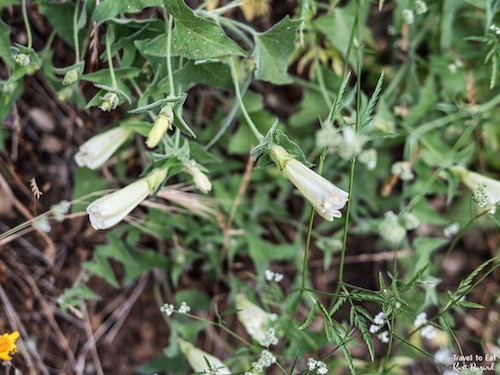
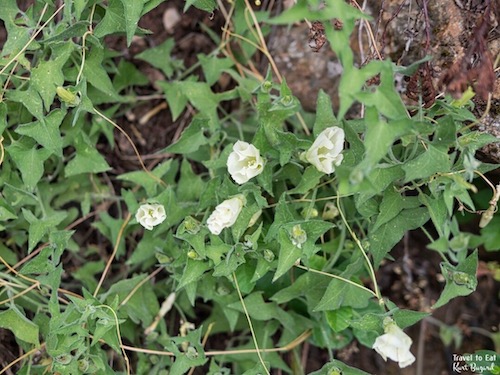
Calystegia (bindweed, false bindweed, or morning glory) is a genus of about 25 species of flowering plants in the bindweed family Convolvulaceae. The genus has a cosmopolitan distribution in temperate and subtropical regions, but with half of the species endemic to California. They are annual or herbaceous perennial twining vines growing to 1-5 m tall, with spirally arranged triangular leaves. The flowers are trumpet-shaped, 3-10 cm diameter, white or pink, with a sometimes inflated basal calyx. Calystegia malacophylla var. berryi, common name Berry’s Morning Glory, is a perennial herb that is native to California and is endemic (limited) to California. It is included in the CNPS Inventory of Rare and Endangered Plants. It is primarily found in Fresno, Kern and Tulare counties in California also found in the Sequoia National Park.
White False Gilyflowers
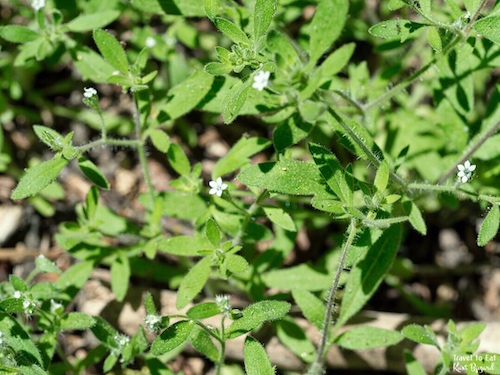
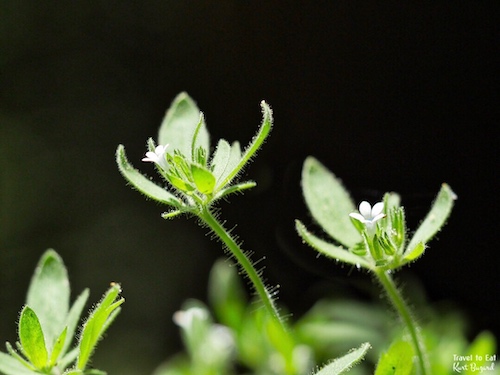
Allophyllum is a small genus of flowering plants in the phlox family known as false gilyflowers. These are hairy, glandular annuals with tall, thin, branching stems topped with clusters of small tubular flowers in varying shades of purple and white. Some of the plants are sticky, and all have seeds which become gluey when wet. False gilyflowers are native to western North America.
Meadow Lotus
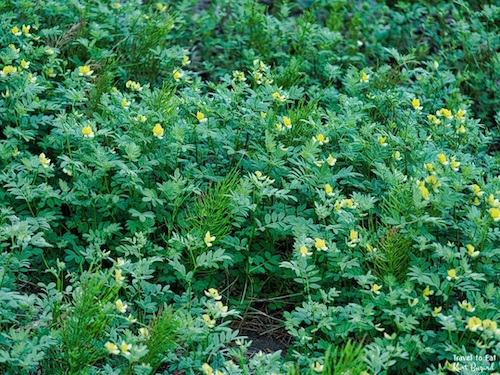
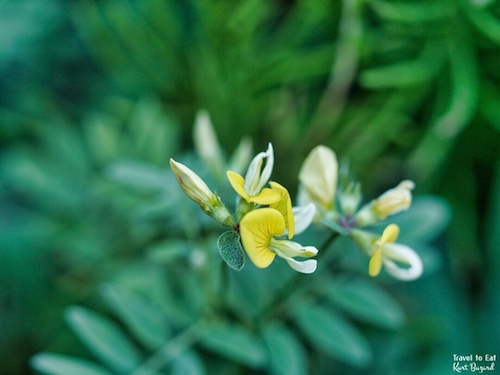
Lotus oblongifolius is a species of legume known by the common name streambank bird’s-foot trefoil or meadow lotus. It is native to western North America from Oregon to northern Mexico, where it grows in moist to wet areas in several types of habitat. This variety of the species, var. cupreus, the copper-flowered bird’s-foot trefoil, is endemic to the Sierra Nevada slopes of Tulare County, California and the Sequoia National Forest.
Falsegold Groundsel
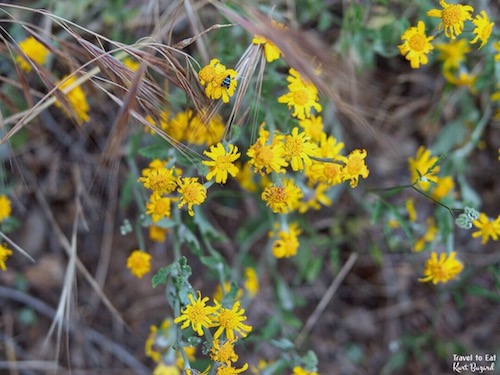
Packera pseudaurea is a species of flowering plant in the aster family known by the common name falsegold groundsel. It is native to North America, where it can be found in western and central parts of Canada and the United States. It grows in mountain habitat such as meadows, stream banks, and woodlands.
Musk Flower
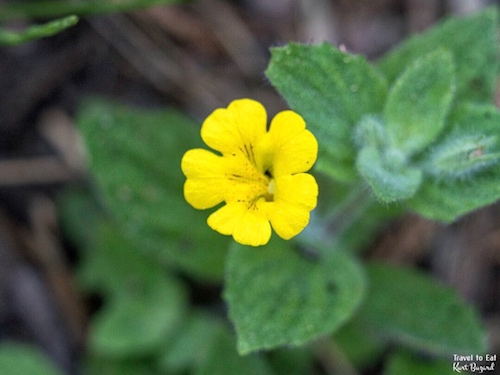
Erythranthe moschata is a species of monkeyflower known by the common names muskflower, musk monkeyflower, and formerly as the common musk, eyebright and musk plant. It is native to western North America from British Columbia to California to the Rocky Mountains, where it grows in moist, partially shaded habitat in mountains, woodlands, chaparral, and other areas. Erythranthe moschata was widely grown and sold commercially in Victorian times for its fragrance, and is well-known for the story that all cultivated and known wild specimens simultaneously lost their previous strong musk scent around the year 1913. It is notable that Douglas, who first described the species and collected seed in 1826 near Fort Vancouver from which the first examples in England were raised, made no reference to a strong musk scent in his field notes. Moreover there are references as early as 1917 to plants in the wild having a wide range of characteristics between scentless and strongly scented, with the latter being very much the exception
Sticky Cinquefoil
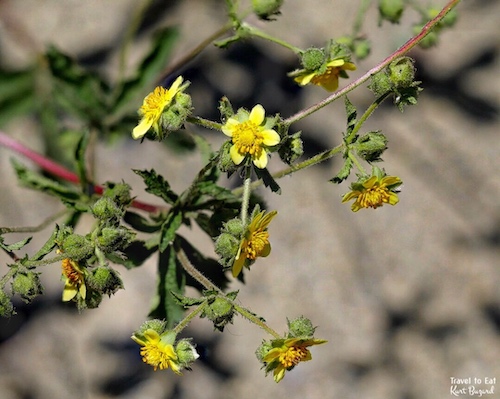
Drymocallis glandulosa, known by the common name sticky cinquefoil and formerly as Potentilla glandulosa, is a species of the family Rosaceae. It is native to western North America from southwestern Canada through the far western United States and California, into Baja California. It is widespread and can be found in many types of habitats. It is usually coated in hairs, many of which are glandular, giving the plant a sticky texture. The leaves are each divided into several leaflets, with one long terminal leaflet and a few smaller ones widely spaced on each side. The inflorescence is a cyme of 2 to 30 flowers which are variable in color and size. Each has usually five petals up to a centimeter long which may be white to pale yellow to gold.
Tall Cinquefoil
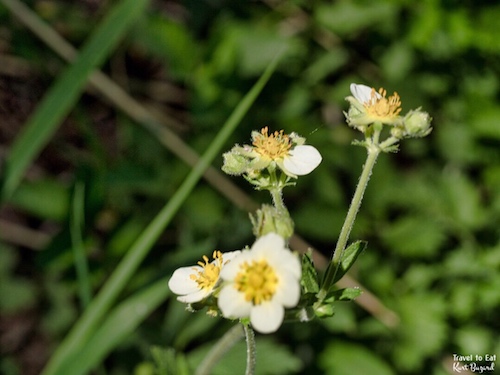
Drymocallis arguta is another example of cinquefoil, also moved to Drymocallis. Drymocallis arguta, commonly known as the tall cinquefoil, prairie cinquefoil, or sticky cinquefoil, is a perennial herbaceous plant native to North America. It was formerly included with the typical cinquefoils in the genus Potentilla. The flowers are small and the nectar and pollen are easy for short-tongued insects to reach. Small short-tongued bees visit the flowers to gather or feed on pollen and nectar, hoverflies feed on pollen, and wasps occasionally feed on nectar.
Umbellate Pussypaws
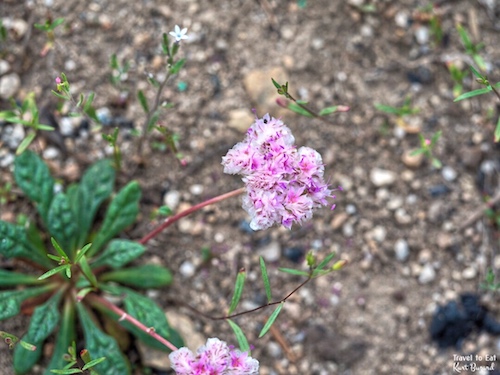
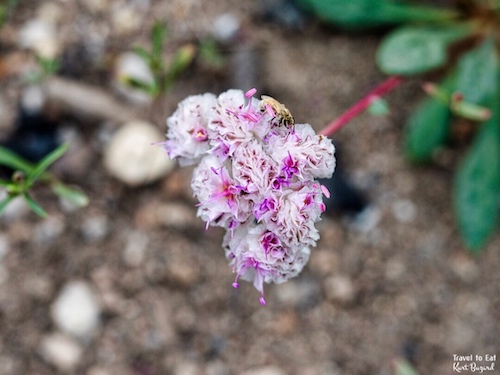
Cistanthe is a plant genus which includes most plants known as pussypaws. These are small, succulent flowering plants which often bear brightly colored flowers, though they vary quite a bit between species in appearance. Some species have flowers that are tightly packed into fluffy-looking inflorescences, the trait that gives them their common name. Many are adapted to arid environments, with some able to withstand climates that almost completely lack rainfall. Cistanthe umbellata (formerly Calyptridium umbellatum) is a species of flowering plant in the purslane family also known by the common name Mount Hood pussypaws. It is native to western North America from British Columbia to California to Colorado, where it grows in a number of habitat types, including in areas inhospitable to many plant types, such as those with alpine climates.
Pink Stickseed
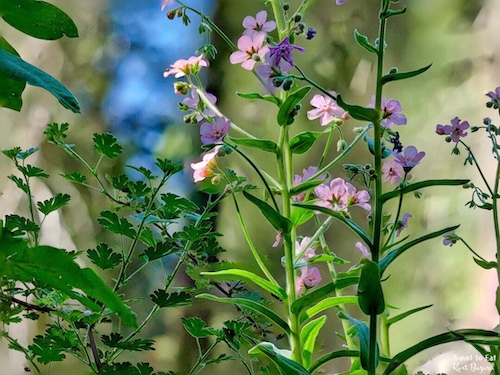
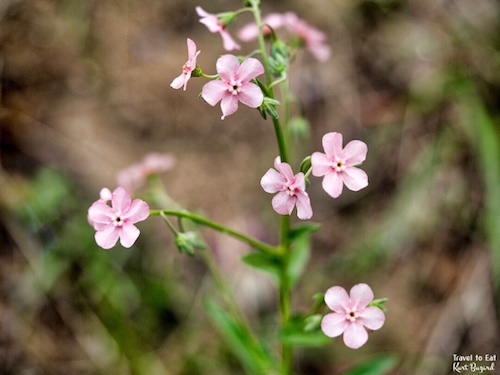
Hackelia mundula is a species of flowering plant in the borage family known by the common name pink stickseed. It is native to the high mountains of California, especially the Sierra Nevada. Its range may extend into Oregon. This is a lush, hairy perennial herb grows to maximum heights between 1 1/2 to 2 1/2 feet (40 to 80 centimeters). It produces an array of erect stems with oval- or lance-shaped leaves most abundant around the bases.
Pacific Bleeding Heart
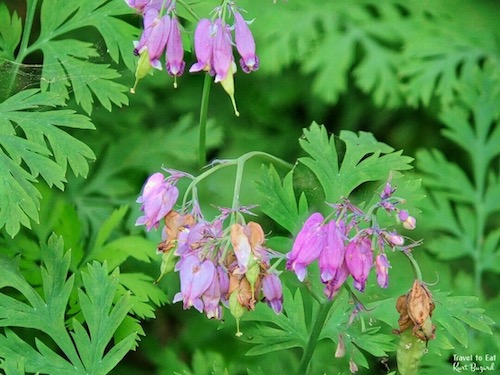
Dicentra formosa, the western bleeding heart or Pacific bleeding heart, is a flowering plant in Poppy family, generally found in moist wooded areas from California to British Columbia. It is a perennial that grows from a horizontal rootstock (tuber). The plant can approach half a meter (1 1/2 feet) in height. The flower has four petals between one and two centimeters long in shades of purple to pink to nearly white. The outer two petals curve and pouch, forming a rough heart shape. Leaves are finely divided and fernlike, growing from the base of the plant. The Pacific bleeding-heart is native to moist woodland, forest, and stream banks from California to British Columbia, from sea level to the subalpine zone.
Mustang Clover
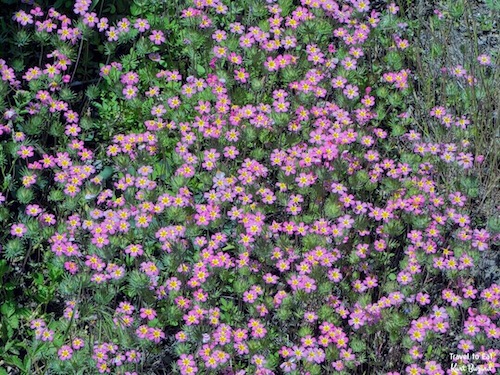
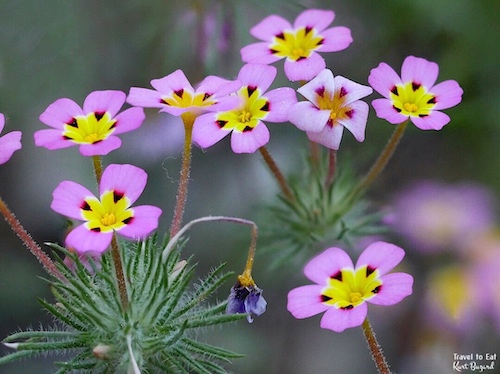
Leptosiphon montanus (syn. Linanthus montanus) is a species of flowering plant in the phlox family known by the common name mustang clover. It is endemic to California. It grows in dry openings of oak woodland habitats in the western Sierra Nevada foothills, from 300–1,700 meters (980–5,580 ft) in elevation. Leptosiphon montanus is an annual herb producing a thin, hairy stem up to 60 centimeters tall. The leaves are divided into needle-like linear lobes each 2 or 3 centimeters (about an inch) in length. Its bloom period is from April to July.
Marsh Checkerbloom
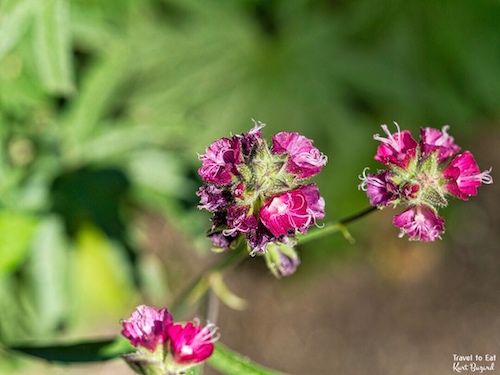
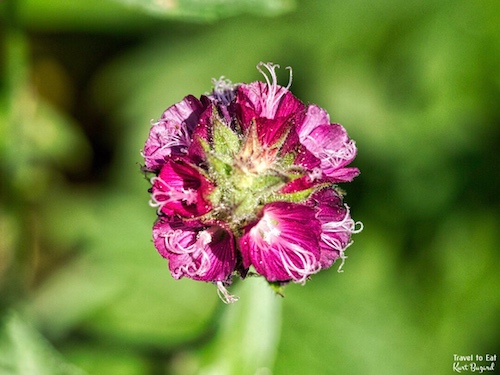
Sidalcea ranunculacea is a species of flowering plant in the mallow family known by the common name marsh checkerbloom and marsh checker mallow. The plant is endemic to California, known only within Tulare County and Kern County. It grows in the Southern Sierra Nevada and Greenhorn Mountains at 1,820–3,050 metres (5,970–10,010 ft) in elevation. Many populations are within the Sequoia National Forest, Sequoia National Park, or Kings Canyon National Park. It grows in moist areas, such as wet meadows and on stream banks, in yellow pine forest, red fir forest, lodgepole forest habitats. The blooming period is June to August.
Applegate’s Paintbrush
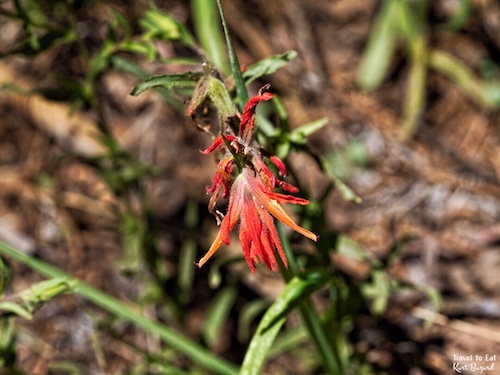
Castilleja, commonly known as Indian paintbrush or prairie-fire, is a genus of about 200 species of annual and perennial herbaceous plants native to the west of the Americas from Alaska south to the Andes, northern Asia, and one species as far west as the Kola Peninsula in northwestern Russia. Castilleja applegatei is a species of Castilleja known by the common names Applegate’s Indian paintbrush and wavyleaf Indian paintbrush. There are five subspecies. They are variable in appearance but distinguishable from other Castilleja species by the wavy margins and stickiness of the leaves.
Littleleaf Ceanothus
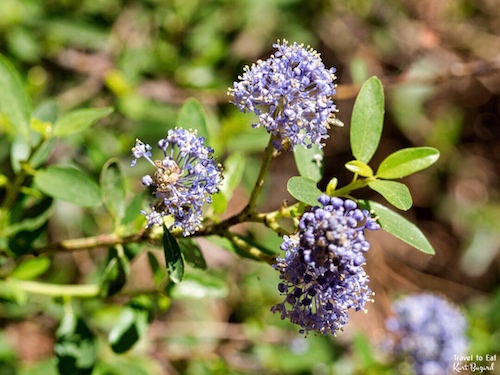
Ceanothus parvifolius is a species of shrub in the buckthorn family Rhamnaceae known by the common name littleleaf ceanothus. It is endemic to the High Sierra Nevada of California, where it grows in moist areas in the forest. This is a spreading shrub, growing to a maximum height of just over a meter (yard), forming a wide bush. The woody parts are reddish in color and hairless. The leaves are alternately arranged and deciduous. They are less than 2 centimeters long, mainly oval in shape and smooth-edged, sometimes with a few tiny teeth near the tip.
Meadow Lupine
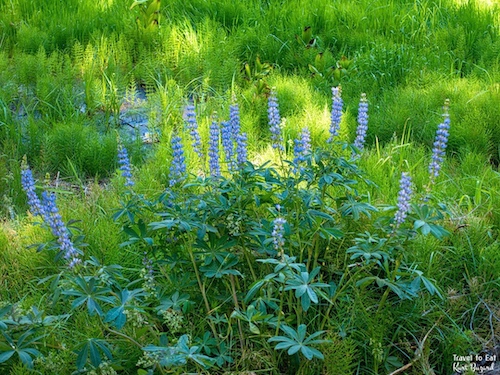
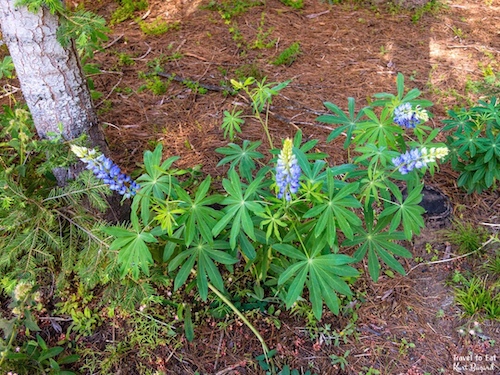
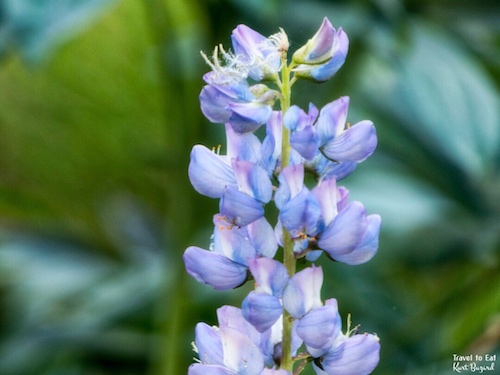
Lupinus polyphyllus (large-leaved lupine, big-leaved lupine, many-leaved lupine or, primarily in cultivation, garden lupin) is a species of lupine (lupin) native to western North America from southern Alaska and British Columbia east to Quebec, and western Wyoming, and south to Utah and California. It commonly grows along streams and creeks, preferring moist habitats. This lupine stands from 2 to 5 feet high in the margins of wet meadows and is one of the most luxuriant in flower and foliage of all sierran lupines. There are over 40 other kinds of lupine in the park.
Blue Eyed Mary
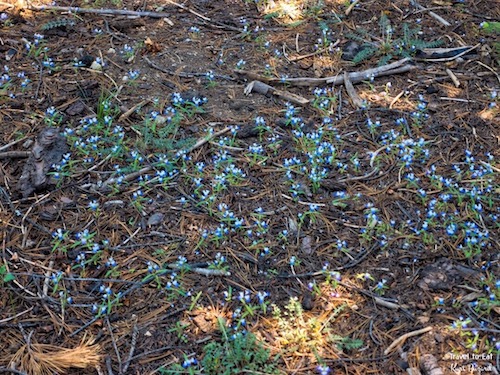
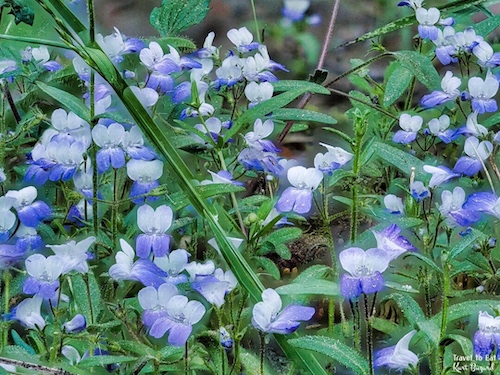
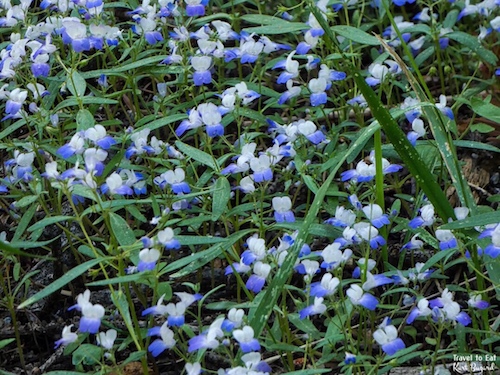
Collinsia parviflora is a species of flowering plant in the Plantaginaceae known by the common names maiden blue eyed Mary and small-flowered collinsia. This tiny wildflower is a common plant throughout much of western and northern North America, where it grows in moist, shady mountain forests. The minuscule flowers grow singly or in loose clusters of several. Each flower has five lobes, the lower deep blue to purple and the upper white. The whole corolla is only a few millimeters across.
I hope you enjoyed the post, please leave a comment.
[mappress mapid=”226″]
References:
Buckeye Trees https://www.arborday.org/programs/nationaltree/buckeye.cfm
Sequoia National Park Wildflowers http://sequoiawildflowers.com/
Sequoia National Park Wildflowers
Musk Flower http://calscape.org/Mimulus-moschatus-(Musk-Flower)?srchcr=sc570c55089b2c6

